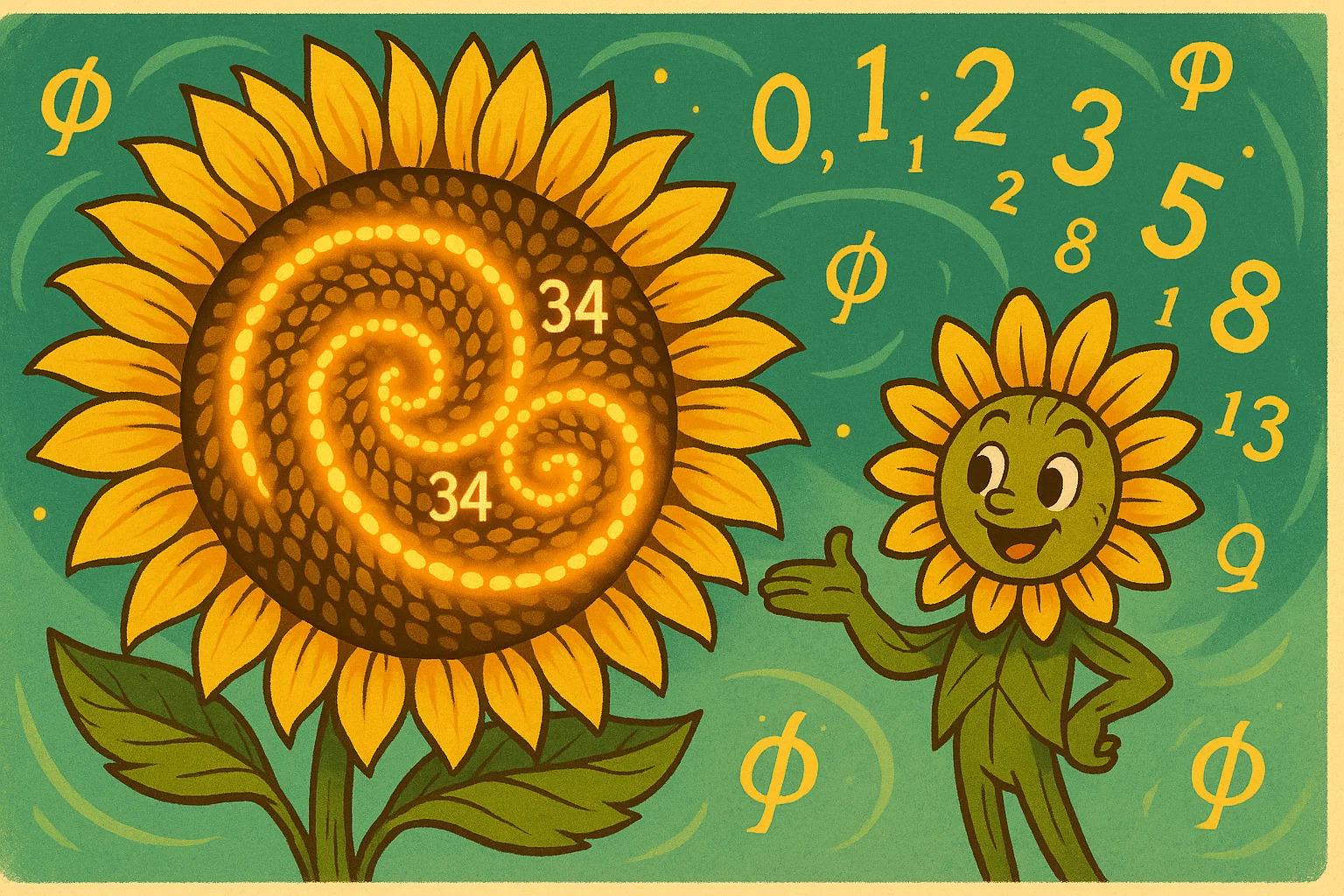The Fibonacci sequence is one of the most fascinating patterns in mathematics, showing up everywhere from computer science to the spirals in sunflowers. Understanding this sequence can help you spot patterns in nature, improve problem-solving skills, and even see the connection between math and art. Below, we’ll explore what the Fibonacci sequence is, how it’s built, and why it has become so important across science and daily life.
What Is the Fibonacci Sequence?
The Fibonacci sequence is a series of numbers where each number is the sum of the two preceding ones, starting with 0 and 1. This creates a pattern that begins:
0, 1, 1, 2, 3, 5, 8, 13, 21, 34, …
Each new term is formed by adding the two before it, and this process can continue infinitely. The rule is simple:
F(n) = F(n – 1) + F(n – 2)
For example:
-
1 + 1 = 2
-
1 + 2 = 3
-
2 + 3 = 5
-
3 + 5 = 8
What makes this sequence so remarkable is how often it appears in the real world. From the branching of trees and the arrangement of leaves to the spiral shells of nautilus and the proportions of famous artworks, the Fibonacci pattern shows up far beyond textbooks. Its connection to the golden ratio (approximately 1.618) adds another layer of intrigue, linking mathematics to nature, architecture, and design.
Did You Know? Sunflowers can have hundreds of seeds arranged in spirals that follow Fibonacci numbers — one spiral might have 34 seeds, the other 55, both consecutive Fibonacci numbers.

How the Fibonacci Sequence Is Calculated
The Fibonacci sequence is built using a simple rule, yet it can grow into very large numbers surprisingly fast. Each term in the sequence is calculated by adding the two numbers before it:
F(n) = F(n – 1) + F(n – 2)
The sequence starts with:
-
F(0) = 0
-
F(1) = 1
From there, each new term is the sum of the previous two:
-
F(2) = 0 + 1 = 1
-
F(3) = 1 + 1 = 2
-
F(4) = 1 + 2 = 3
-
F(5) = 2 + 3 = 5
This method is called the recursive approach, because each term “calls back” to earlier ones. While easy to understand, it can become slow to compute for very large numbers since each step depends on the two before it.
To simplify calculations, mathematicians often use a closed-form expression called Binet’s Formula. It uses the golden ratio (φ ≈ 1.618) to directly calculate any Fibonacci number without adding up all the previous ones:
F(n) = (φⁿ − (1 − φ)ⁿ) ÷ √5
Although this formula involves irrational numbers, when rounded it produces exact Fibonacci numbers. This makes it extremely useful for computer algorithms and quick calculations when you need large terms in the sequence.
Fun Fact: “The 100th Fibonacci number has 21 digits — and yet, thanks to formulas like Binet’s, mathematicians can find it instantly without computing the 99 terms before it.”
Related Number Sequences You Might Need
While the Fibonacci sequence is one of the most famous in mathematics, it’s just one type of number pattern. If you’re curious about exploring other sequences, here are a few that highlight how different rules can create fascinating results:
-
Geometric Sequence Calculator
A geometric sequence multiplies each term by a fixed ratio to get the next one. For example, 2, 4, 8, 16, 32… doubles each time. These sequences are common in finance (like compound interest) and physics (such as exponential growth and decay). -
Arithmetic Sequence Calculator
An arithmetic sequence adds a constant difference to each term. For instance, 5, 10, 15, 20… increases by 5 every step. This simple pattern is often used in budgeting, scheduling, and basic problem-solving. -
Number Sequence Calculator
Curious about custom patterns or non-standard progressions? This calculator helps generate and analyze any sequence you define, whether it follows a known rule or your own formula.
By comparing these sequences to Fibonacci, you’ll see how diverse mathematical patterns can be — from simple addition and multiplication to recursive relationships that grow in unexpected ways. If you’re exploring Fibonacci and other sequences, you might also enjoy using our Math Calculator.

